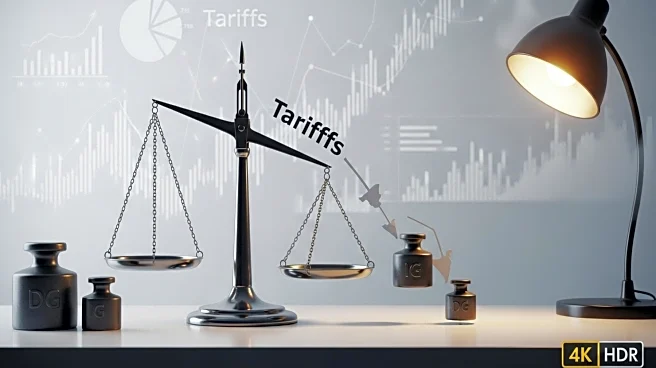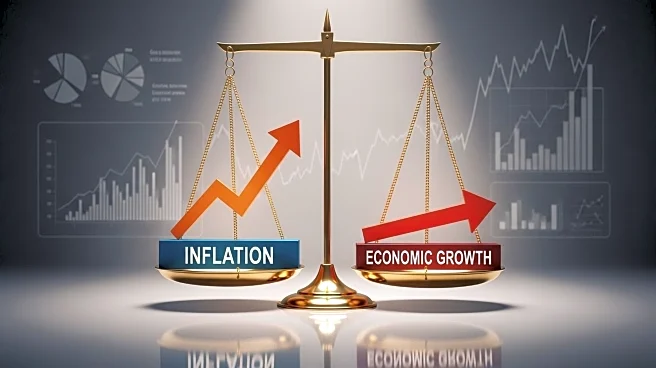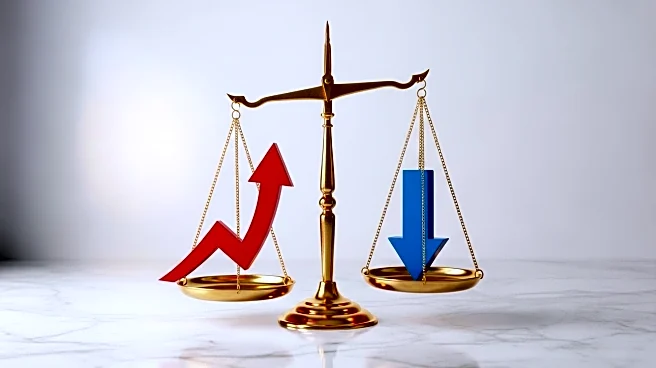What is the story about?
What's Happening?
Since President Trump announced new import tariffs in April, inflation has increased, particularly in tariff-sensitive categories such as coffee, toys, and televisions. The consumer price index (CPI) data shows a 2.9% rise in overall prices in August compared to the previous year. Core inflation, excluding food and energy prices, rose 0.4% in August, marking the largest monthly gain since January. The Federal Reserve Bank of San Francisco notes that these tariffs have a significant impact on prices, affecting various sectors from food and retail to manufacturing and healthcare. Americans now face an average tariff rate of 17.4%, the highest since 1935, which is estimated to cost households an extra $2,300 in 2025.
Why It's Important?
The tariffs imposed by President Trump have broad implications for the U.S. economy, affecting consumer spending and potentially slowing economic growth. As tariffs increase the cost of imported goods, businesses may pass these costs onto consumers, leading to higher prices and reduced purchasing power. This situation could impact various industries, including agriculture, manufacturing, and retail, as they navigate increased costs and potential supply chain disruptions. The rising inflation rate also poses challenges for the Federal Reserve's monetary policy, as it drifts further from its target of 2%, potentially influencing interest rate decisions.
What's Next?
The ongoing impact of tariffs on consumer prices may lead to further adjustments in business strategies and consumer behavior. Companies might seek alternative suppliers or adjust their pricing models to mitigate tariff-related costs. Additionally, political leaders and policymakers may face pressure to address the economic consequences of tariffs, potentially leading to negotiations or revisions in trade policies. The Federal Reserve may also consider monetary policy adjustments to manage inflation and support economic stability.
AI Generated Content
Do you find this article useful?













